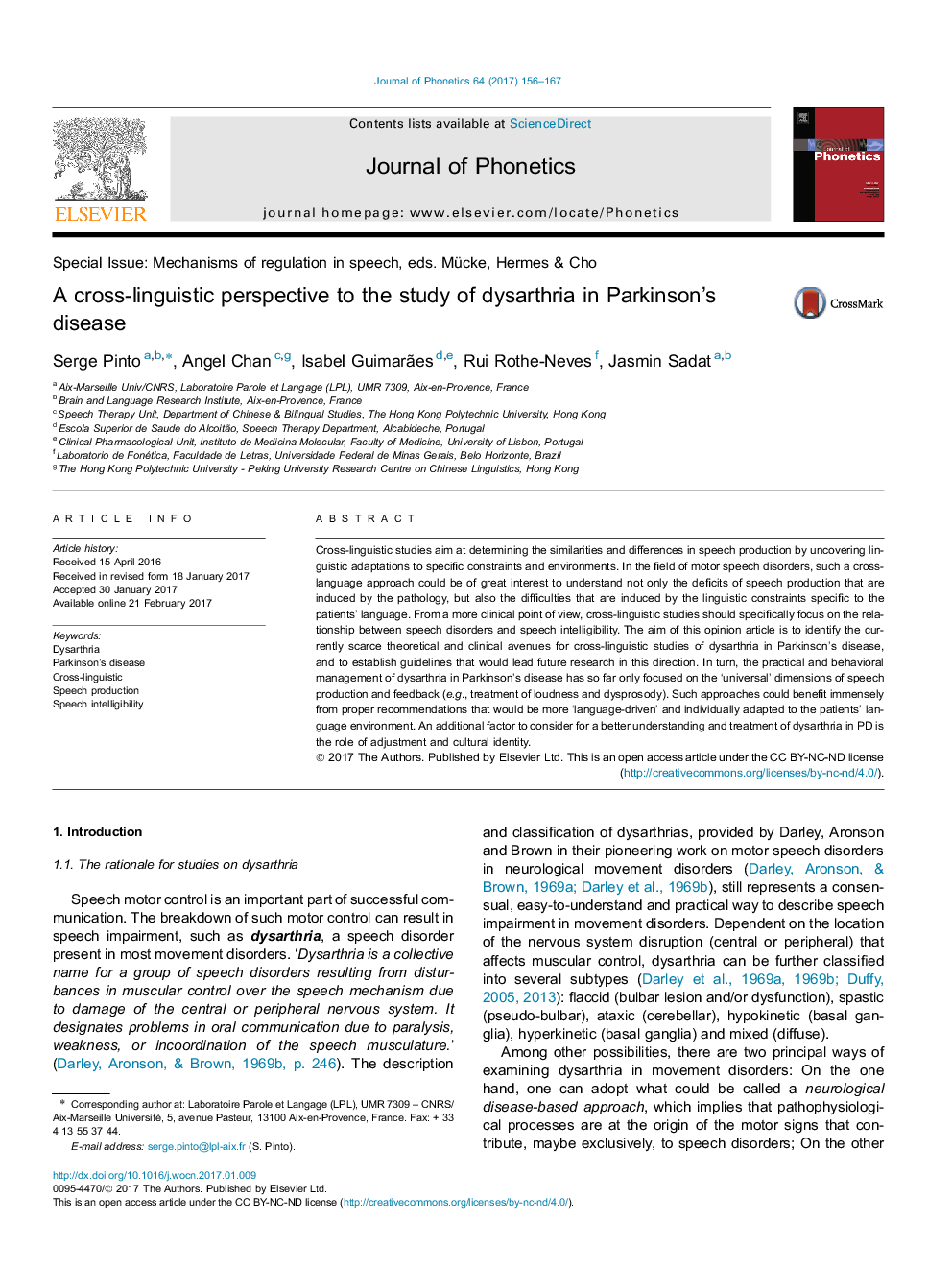| Article ID | Journal | Published Year | Pages | File Type |
|---|---|---|---|---|
| 5124061 | Journal of Phonetics | 2017 | 12 Pages |
â¢Cross-linguistic studies of dysarthria in Parkinson's disease are scarce.â¢Language-specific constraints interacting with dysarthria need further research.â¢Speech intelligibility is an important part when studying dysarthria in Parkinson's disease.â¢A dynamical systems approach would be suitable to study dysarthria.
Cross-linguistic studies aim at determining the similarities and differences in speech production by uncovering linguistic adaptations to specific constraints and environments. In the field of motor speech disorders, such a cross-language approach could be of great interest to understand not only the deficits of speech production that are induced by the pathology, but also the difficulties that are induced by the linguistic constraints specific to the patients' language. From a more clinical point of view, cross-linguistic studies should specifically focus on the relationship between speech disorders and speech intelligibility. The aim of this opinion article is to identify the currently scarce theoretical and clinical avenues for cross-linguistic studies of dysarthria in Parkinson's disease, and to establish guidelines that would lead future research in this direction. In turn, the practical and behavioral management of dysarthria in Parkinson's disease has so far only focused on the 'universal' dimensions of speech production and feedback (e.g., treatment of loudness and dysprosody). Such approaches could benefit immensely from proper recommendations that would be more 'language-driven' and individually adapted to the patients' language environment. An additional factor to consider for a better understanding and treatment of dysarthria in PD is the role of adjustment and cultural identity.
